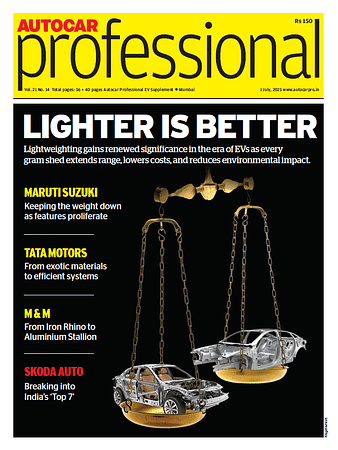2012 Lightweighting Special: BD Industries gets OEMs to think out of the box
The Mumbai-based BD Industries (BDI) has a range of products that it says can help automakers reduce vehicle weight.
The Mumbai-based BD Industries (BDI) has a range of products that it says can help automakers reduce vehicle weight. According to managing director Dalbir Saini, the company employs a rotational moulding process whereby it manufactures plastic fuel tanks, fenders, Adblue/ urea tanks, rooftop/ canopies (with AC system), bus seats, consoles, snorkel and doors. He is of the opinion that there is a lot of scope under the hood for reducing component weight.
Speaking about the challenges to reducing weight, he says that “design restriction of other processes play a major role, as our process has the uniqueness of making any shape and size, which helps OEMs to think out of the box for the component design.”
BDI, which is a Tier 1 supplier for Mahindra & Mahindra, John Deere, Ashok Leyland, Daimler, Volvo, JCB, Bajaj Auto and Tata Motors, says it works from concept stage with the OEMs, essentially to understand the automaker’s requirement and accordingly design the product as per process requirement which results in both a reduction of weight as well as the price.
BDI has recently developed ballast weight in plastic for a leading tractor manufacturer in India. The product is currently under validation. Conventional ballast weight is manufactured in aluminium/ cast iron, where the weight of a ballast is 75kg. The plastic ballast BDI developed weighs 6kg and when required, can be filled with water to obtain 75kg weight.The company is currently developing the complete scuttle with fuel tank as an integrated part for a tractor.
Dalbir Saini disagrees that engineering plastics are the only cost-effective answer to steel? “No, they are not the only cost-effective answer to steel. We are working with PB1 material which was earlier recommended for injection or blow moulding only, but we have developed this material through our R&D for rotational moulding and successfully implemented for hydraulic tanks for excavators.”
As regards research and development expenditure on lightweighting efforts, he says, “About four percent of our total turnover is spent on R&D. All our projects are for conversion from steel or other material, to plastics.”
RELATED ARTICLES
How Venkat Thimaraju Bridged Mines and Machines for Daimler
From a young engineer's vision : Daimler India unleashes next-Gen trucks for India's booming construction and mining sec...
Tata Motors: From Ice Legacy To Electric Intelligence
Tata Motors has a lot riding on the newly launched Harrier EV, coming as it does on a fresh, EV-oriented software platfo...
Complete List of Cars and SUVs Tested by Bharat NCAP
Bharat NCAP has crash-tested 20 models to date, including both ICE-powered vehicles and EVs.





 By Autocar Pro News Desk
By Autocar Pro News Desk
 31 May 2012
31 May 2012
 6505 Views
6505 Views





 Shahkar Abidi
Shahkar Abidi




